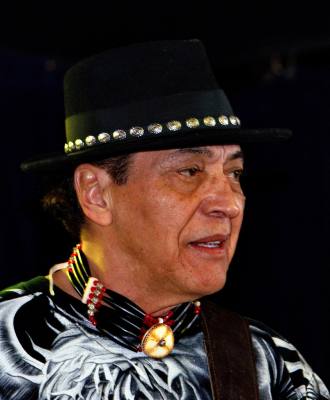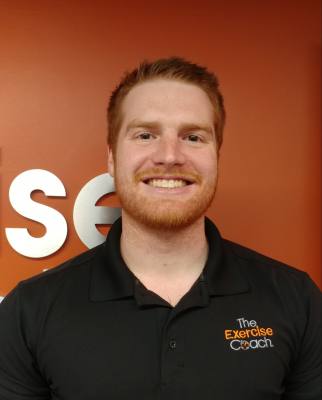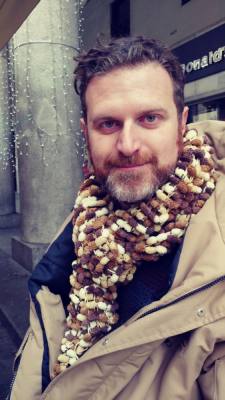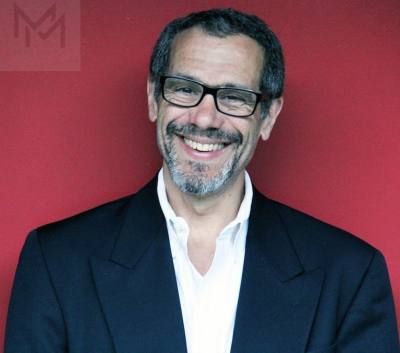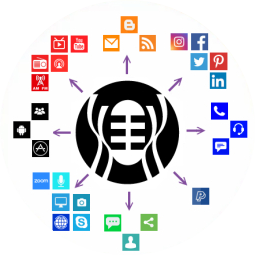P A T
V E G A S
BASSIST, SONGWRITER,AUTHOR AND
CO-FOUNDER
OF
LEGENDARY NATIVE AMERICAN ROCK GROUP
R E D B O N E
According to co-founder,bassist,singer and songwriter Pat Vegas, it was Jimi Hendrix who talked the musicians into forming an all-Native American rock group. Vegas told Record Collector writer Jeremy Isaac, "Hendrix was a friend of ours.... and he was half Indian. Once he knew that we were Indian too he used to come and hang with us because of that. Jimi made me aware of my roots: He'd say, 'Native American is beautiful, man, be proud of that.'"
Redbone's story is interesting from more than one point of view. The band itself of course, who had a great career, with ups and downs. The fact that the musicians were all native Americans from different origins (Cherokee, Yaquis, Apaches and Shoshones...). Their political implication and the fact there were censored that shows a very interesting political and social background of the US nation. All this plus the fact that they produced a unique, powerful and soulful music!
The name Redbone itself is a Cajun term for a mixed-race person ("half-breed"), the band's members being of mixed blood ancestry. The band referenced Cajun and New Orleans culture many times in their lyrics and performing style.
The mid-seventies were the period of big success, not only in the USA but even more in Europe and especially in the Netherlands. Maggie, The Witch Queen of New Orleans, Come and Get your Love, Wounded Knee and even Suzy Girl were big hits in many European countries, some reaching Number One. This led the band to tour and play almost non-stop during this period.
They shared the stage at various times with Dr. Hook, Albert Hammond, and others. Highlights on U.S. tours include playing at Carnegie Hall in New York with Argent and Kiss, opening for Marvin Gaye at the Forum in Inglewood, California, sharing the bill with Parliament Funkadelic in Philadelphia, and playing with Steely Dan at the Convention Center in Las Vegas.
Pat Vegas has continued to write music over the years. Some tunes had been recorded since 1980, with Lolly of course, but also with Tony bellamy for some songs. Finally, in 2005 Pat puts this work out on a new CD called One World. It was released in 2005 by a small independent record company. It was reedited in 2009 and retitled as Peace Pipe. At the same period Pat Vegas recreates the band with new musicians. They tour mainly in the west of the United States since.
Redbone was inducted into the Native American Music Association Hall of Fame in 2008, as well as the New York Smithsonian in 2013.
In 2014, "Come And Get Your Love" experienced a resurgence in popularity – and has been thoroughly embraced by a new generation - when it was featured in the Marvel Studios film Guardians of the Galaxy as the very first, and many say most important song, on a mixtape made for the film’s hero, Peter Quill- “Starlord” It was also included on the film's soundtrack album, which reached the Number 1 on the Billboard Top 200 chart, where it remains. When released as a single in 1974 it went certified Gold, selling well over one million copies, and it is a song that just does not fade away-- there have been over one hundred million hits on YouTube alone.
Since 2015 "Come And Get Your Love" has been used as the theme song for Netflix produced cartoon series “F is for Family” and the TV series “Big Shrimpin”.
I first experienced The Exercise Coach’s patented Smart 20 minute workout during my senior year at Trinity International University. A family member of mine talked me into trying out two free sessions to experience the workout. As a member of the Basketball team for Trinity, I couldn’t believe how effective 20 minutes of exercise could be! I began an internship with the Exercise Coach at their Corporate Headquarters in Lake Zurich. I also became Trinity’s strength and conditioning coach during my senior year, in which our team made it to the elite 8, set a school record for most wins and most importantly for me, had no missed games by any players due to injury! Towards the end of my internship and my time at Trinity, the opportunity developed to be part of The Exercise Coach here in Naperville. I graduated from Trinity with a Bachelor’s degree in Sport and Wellness Management with a minor as a fitness specialist and a minor in business. Being able to help people achieve their personal goals and seeing first hand their quality of life improve because of increased energy levels, reduction of chronic conditions and many other ways that The Exercise Coach impacts people’s lives has proven to be one of my most rewarding experiences ever!
Joel Franco tells compelling stories with an elegant voice, a crisp Italian sensibility and beautiful pictures. Franco’s experience, vision and intensity bring leadership, heart, and an eye for detail to his films. His understanding of the human condition and his passion for authenticity combine to create artistic, highly commercial works that draw the audience in and make them feel. Franco’s genuine desire to protect the integrity of each story and to bring out the best in the actors and crew have made him a trusted source for getting the job done. Colleagues trust his refreshing character and understand that he is a man of commitment and does what he says he will do, when he says he will do it.
Joel Franco was born in Italy and came to the United States in his late teens where he quickly immersed himself in American culture and film. According to Franco, “I have always admired American films. The American school of acting has a long history of producing great actors and I wanted to be a part of the world of film–a place where captivating stories are unveiled. The creation of film plays into my strengths: I love that magic is the result of the creative process. There must be passion to nurture the momentum of the story. And one must have intense focus to get the job done.”
Influenced by American filmmaker Sidney Lumet for his vigorous storytelling and Italian director Robert Rossellini for his social realism, Franco is dedicated to staying true to the story in a fast paced, realistic and refined style.
In 2006, Franco partnered with Solidaris LLC to found Chesapeake Films, LLC. Chesapeake Films has option agreements to produce several feature films and plans to produce two features per year in-house and to collaborate with established film companies for additional opportunities.
Joel Franco is a graduate of University of Maryland/Baltimore, a graduate of the USC-Universal Producing and Directing Program, and holds an M.F.A. in film production from the School of Film and Television at Loyola Marymount University in Los Angeles.
JIMI YAMAGISHI
As the current director of the SongNet.org, Jimi Yamagishi brings over four decades of life in this industry to the table, helping other songwriters make those crucial connections while actively playing the circuit to keep current. A veteran session musician with a wide variety of genres in his pockets, his solo material features lyrical wit similar to Michael Franks, smooth James Taylor-esqe guitar lines, with a lil’ spritual sauce on the side.
Having written over a thousand songs, he’s currently working on archiving them on Youtube, having already released several albums & CDs along the way.
NICOLE DRAKULICH
Artist / Graphic Designer, diagnosed with a rare genetic eye disease in 2008 is slowly loosing her eyesight but gaining her inner vision. She speaks about turning a negative into a positive with finding a new career path and appreciation for life through her spiritual journey. She is bringing an IMMERSIVE EXPERIENCE for ALL…
Travel through space and time in every class, inside immersive landscapes designed to elevate your soul and expand your consciousness using projected imagery and sound.
ORAYA offers a new paradigm of PILATES – YOGA – WELLNESS and proples this global movement toward a more connected and elevated human species.
Oraya’s mission is to create a heart centered movement through a global community that raises mind, body and soul awareness. Similar to Soul Cycle and Crossfit, Oraya’s Pilates and yoga classes will inspire beyond the physical, guiding participants toward an elevated fitness experience through curated teaching techniques and a unique, immersive environment combined with visuals and sound.
A big part will be giving back with a portion of proceeds flowing toward women’s education and the evolution toward a more balanced work force and, ultimately, world. Our goal is to boost the economy and expand female empowerment. This is the time for women to rise and come to the forefront.
Taking the mind body connection to a deeper level than other Pilates and yoga studios, we will offer meditation classes, inspiring lectures and workshops about spirituality, metaphysics, sacred geometry and healing modalities.
The wellness aspect will offer light medicine, Reiki, sound healing and detoxification.
Our organic bar offers snacks, juices, elixirs, tonics, coffee and teas.
We will also have a clothing line, skincare line, and yoga mats. A portion of all proceeds will benefit women’s education and women in the arts.
“Musician’s singer” Cathy Segal-Garcia is a vocalist of “real music integrity” poignantly reports Critical Jazz reviewer. Wherever she travels in the world, audiences and musicians are moved.
Segal-Garcia’s deep connection to rhythm and her earthy and organic voice bring a nakedness to her communication, a direct line in to one’s heart. Her repertoire includes original compositions and modern interpretations of standards and jazz musicians’ compositions.
Critical Jazz says, “The vibeof artistic integrity coupled with honest emotion for a captivating experience.” Don Heckman of the Los Angeles Times added, “Segal-Garcia’s most compelling quality is a warm, dark sound, luxurious enough to wrap a song in an envelope of lush timbres.” Segal-Garcia has been a tireless supporter and producer of the L.A. jazz scene for years. Recognized for such by musicians,singers, jazz fans, students of jazz singing and organizations such as L.A.Jazz Scene, lajazz.com, CA Jazz Foundation, Jazzvocalalliance.com, Great American Songbook Preservation Society, CA Lawyers for the Arts, and named a“Jazz Living Legend” in L.A.
Recording and performing with jazz legends is part of her career heritage. Guitarists Ted Greene, Joe Diorio, Larry Koonse, John Pisano. Pianists Ross Tompkins, Billy Childs, Otmaro Ruiz, Josh Nelson. Drummer Peter Erskine & bassist Marc Johnson are on her recording “Song of The Heart”…Erskine says, “The freshest vocal project which I’ve ever been involved in, and it’s one of my favorite tapes of the past year…This recording deserves to be heard by as many people as possible.” Marc Johnsonadds, “The choice of material is top notch — very interesting. The duets were special, the interplay, dynamics, Cathy’s range and intonation are great!”
Her teaching is as well known as her singing, receiving accolades from her students who have had their voices and their lives changed. Her workshops for vocalists have been consistently produced since 1998,including such luminary guest clinicians as Mark Murphy, Cheryl Bentyne, Barbara Morrison, Rhiannon, Gretchen Parlato, Kate McGary, Nancy King,
Peter Eldridge, Meredith D’Ambrosio, Sachal Vasandani, and Rebecca Parris.
Cathy Segal-Garcia is known throughout the world for her performing and teaching, especially in Japan where she has toured every year for over 20 years, performing in jazz clubs and festivals throughout the country. She has 12 CDs to date, with another coming out in January 2019.
Anthony Montes
Anthony Montes, is an award winning Actor, Director, Writer and Producer. Anthony has been part of the film and theater industry for over 40 years.
Anthony Montes has been teaching and coaching actors for 30 years. Anthony teaches his Acting Technique, the Montes Method Internationally and Domestically. Anthony has published 13 books of plays that are available on Amazon.
His Award Winning Feature Film, THE LAST NIGHT INN which he wrote and stars in as also available on Amazon. His 2nd Award Winning Feature, THE LAST TRAIN is currently looking for distribution. He has just finished a run of his uniquely original One-Man Show, OUTTA THE DARKNESS INTO THE LIGHT.
When Anthony was 27 he was tired of the struggle and tried to take his life by jumping in front of a train in NY. Once he hit the tracks, he knew that he couldn’t do that to his Mother and tried to jump out of the way, getting clipped by the train which fractured his arm.
He has taken that dark place in his life, and put it into his Writing & Acting to help others, to see that they are worth it.
BURBANK HIGH SCHOOL GENTLEMEN’S OCTET
Burbank High School’s Gentlemen’s Octet is an a capella group of eight young men. This year’s group features Senior Christopher Aguirre, Senior Brandon Powell, Junior Noah Damasen, Junior Nathan Mai, Junior Travis Nichols, Sophomore Jonathan Coleman, Sophomore William Rodriguez, and Sophomore Eric Serna. They are under the direction of Mr. Brett Carroll, the musical director at Burbank High, and alumni Erin McGuire, who arranges the group’s music.
More About Burbank High School’s Gentlemen’s Octet at: https://www.bhsvocal.com
Check their performance calendar to enjoy the group in-person. The group can also be hired to perform at private parties, sporting events & celebrations.

